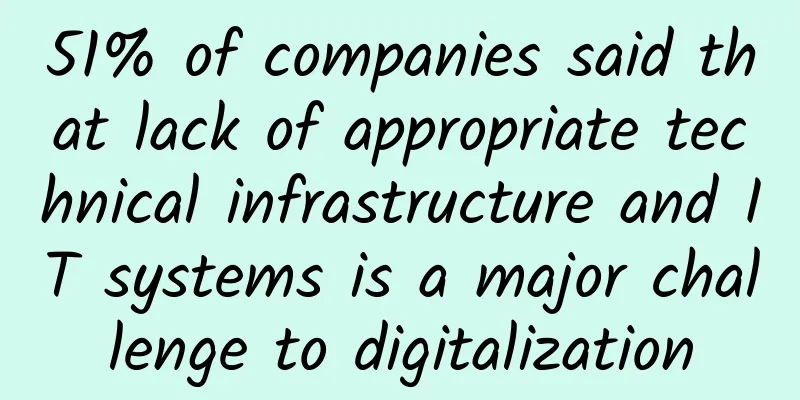5G and Next Generation Networks during the COVID-19 Crisis

|
The word "crisis" in Chinese means both "danger" and "opportunity"... For foreigners only, this strange semantics has now become a reality in 2020. It is demonstrated in the crisis of the COVID-19 pandemic and the opportunities and hopes that 5G and next-generation technologies bring. But there is a caveat: we must move quickly and carefully into 5G.
With the global spread of COVID-19, many of our work has to be done online. For operators, the epidemic has aroused people's desire for larger, faster and more ubiquitous broadband services, and moving towards next-generation networks and 5G will help solve this problem. The surge in online use in the U.S. during the coronavirus pandemic is driving the next generation of the web. In the workplace, we crave Zoom calls and webinars. At home, we binge on Netflix, and our kids are addicted to gaming apps. Many of us are experiencing remote learning and telehealth for the first time. The large numbers of Americans working, learning and interacting online are creating unprecedented demand on wireless carriers and their networks, which in turn is justifying the wireless industry's claims and investments in building high-speed internet connections. The same wireless industry has been looking to the Federal Communications Commission (FCC) and other regulators for help in properly managing demand and making it easier for consumers and businesses to take advantage of network services. Sitetracker, a company focused on critical infrastructure deployment, surveyed a number of companies in early March and found that 44% of operators believed the coronavirus pandemic would increase demand on telecom infrastructure given the increase in the number of households living and working remotely. Transition to next-generation networks is critical The pandemic has brought new awareness to the critical nature of high-speed connectivity, even with current 4G and 4G LTE standards. But it’s also important to note that even with the carriers’ commitment and announcements to the evolution to 5G, in many ways we’re still at the beginning of the curve. The pandemic has put pressure on service delivery. Work stoppages in some locations and some bottlenecks in the supply chain have challenged the construction of infrastructure over the past few months. Understandably, municipalities have been unable to approve work because attention can be diverted to COVID-19. The coronavirus pandemic has also caused some regulatory turmoil. The FCC had to delay by a month the start of its 5G airwave auction, which was scheduled for June, because of the pandemic. An international standards body also delayed the release of a set of key technical standards for 5G after the virus forced the cancellation of some meetings. Then, there are the incorrect reasons behind conspiracy theories that link the connectivity of 5G technology to the coronavirus outbreak. Some seem to think that both 5G and the coronavirus are new, so they must be connected in some way. Others point to questionable sources as proof that the government is hiding something during this global crisis. But ultimately, most of these ideas are based on confusion about 5G technology and long-standing concerns about new cellular technology. To get an update on 5G, users should be able to download a high-definition movie in under a second, a task that would take 10 minutes or longer on 4G LTE. And, in addition to the speed, these networks will also facilitate the development of other technologies, such as self-driving cars, virtual reality, and the Internet of Things (IoT). 5G will have more specific possibilities related to the pandemic. For example, computer vision technology can determine whether retail employees are wiping down counters to prevent the spread of the coronavirus. It can also check whether shoppers are maintaining adequate social distance. And 5G technology can do this continuously in hundreds of thousands of locations. To make this service affordable and instantaneous, 5G and edge computing will be needed. Specifically, edge computing servers can run computer vision services geographically close enough to retail stores to provide low-latency connections, but can also avoid centralization by installing expensive servers in every retail location. Overall, we did a good job A recent Ericsson report noted that the industry has “acknowledged itself well” through the pandemic. The main reason for the increase in data consumption is the increased use of two-way remote work-related applications such as audio, web and video conferencing, entertainment applications (video and audio streaming), social media and messaging. The study also revealed that the quality of video calls with friends and family was the most important experience when consumers were asked to judge the performance of their mobile networks during the crisis. Among older adults, 74% claimed they now use video calls, while 40% have increased their video usage due to social distancing. The coronavirus pandemic has fundamentally changed the way we interact with technology. But obstacles remain Beyond the pandemic, there are obstacles to 5G deployment. In terms of the telecommunications infrastructure and construction behind 5G deployment, it’s easy to overlook what deployment is all about. For infrastructure providers, there are permits from various levels of government, rights of way, application timelines, and other site selection and application fees. For consumers, one of the main barriers to deployment is the lack of end-user devices. Compatible devices are gradually arriving in retail wireless stores, but most devices (phones, cars, wireless routers and smart devices) still do not support 5G. In this regard, the United States lags behind companies such as Huawei, Nokia and Ericsson. For enterprises, a Gartner survey showed that enterprises are interested in investing in 5G services and technologies as long as these services have enhanced mobile broadband, ultra-reliability and low-latency operation. Another Gartner report predicts that by 2025, less than 45% of communications service providers around the world will launch commercial 5G networks. At the enterprise level, mobile service procurement teams must develop realistic budgets to ensure that devices and connectivity modules are compatible with their carrier’s 5G network. Enterprises should consider the expected costs of all implementations that rely on 5G and demand service level agreements (SLAs) at all times. While traditional cellular networks have become increasingly reliant on an increasing number of base stations, achieving 5G-level performance will require a more comprehensive and extended infrastructure. Small cells will be key to densifying networks in preparation for 5G. But an FCC report predicts that more than 800,000 small cell deployments will be needed to make 5G a reality, compared to the 200,000 cell towers needed to support traditional 2G, 3G and 4G services. Distributed antenna systems (DAS) will fill the gap, but building the large number of small cells required for 5G could create difficulties in rural areas. The FCC is busy addressing crowded metropolitan areas, bandwidth-starved rural areas, and streamlined approval processes. On June 9, as part of its 5G Fast Track plan, it took steps to speed up the deployment of mobile broadband infrastructure at multiple levels. The declaratory ruling streamlines the licensing of wireless infrastructure, including 5G. As part of the ruling, FCC Commissioner Brandan Carr noted, “As existing cell sites are upgraded to 5G, all Americans will benefit from world-leading wireless service.” Crisis and opportunity The excitement around the promise of 5G and the reinvestment of operators in the next generation of networks is understandable and warranted. The Economist coined the term “data network effect” to describe the exponential growth in data that will occur as a result of 5G adoption. It will drive huge advances in AI, giving rise to more robots than we can imagine. Amid the coronavirus pandemic, fifth-generation cellular network technology is rolling out in cities across the United States and around the world, and phones, devices and entire businesses are slowly but surely being equipped with 5G capabilities. The promise and opportunity of 5G is compelling as we move firmly down a path toward next-generation networks, albeit with some market unknowns, a path that will have a dramatic impact across the U.S. economy through the pandemic and beyond. |
<<: H3C focuses on new infrastructure to safeguard 5G commercial use
>>: Is it impossible for non-middlemen to hijack TCP?
Recommend
HostHatch: Hong Kong/Tokyo/Singapore AMD EPYC series starting from $25/year, 2GB/25G NVMe/1TB monthly traffic
HostHatch has released a new promotion plan on LE...
The ultimate competition, the battle of the strong--Kunpeng Application Innovation Competition 2020. The Zhejiang Division Finals was successfully held
[51CTO.com original article] On August 21, the fi...
Inspur Networks launches new Wi-Fi 6 products to enable the era of fully “wireless” IoT
On June 22, Inspur Networks held a Wi-Fi 6 new pr...
Horizontal comparison of NB-IoT technologies of the three major operators in terms of infrastructure construction, ecosystem construction, application expansion, and tariff competition
In the blink of an eye, we have entered 2018. In ...
A practical guide to running databases across regions and Kubernetes clusters
Translator | Kang Shaojing Planning | Yun Zhao Am...
Network Quality of Service (QoS) Technology
1. Introduction Branches of the national financia...
TCP protocol status analysis, super complete~
Today I will talk to you about the state analysis...
Analysis on the current status of global 5G development
[[417613]] This article is reprinted from the WeC...
Blockchain from an economic perspective
When talking about blockchain, everyone will ment...
Performance Agreement: API Rate Limit
Rate limiting is a key control mechanism used to ...
9 correct views on the cancellation of data roaming charges
On July 1, data roaming charges were officially c...
WPS joins hands with HarmonyOS to jointly explore the path of smart office upgrade in the era of the Internet of Everything
At the Huawei Developer Conference on September 1...
DesiVPS: $3/month KVM-2GB/20GB/2.5TB/Los Angeles Data Center
According to information from LEB, DesiVPS is a f...
spinservers: $59/month - E3-1280v5, 32GB memory, 1TB NVMe, 30TB/10Gbps bandwidth
spinservers has just released several promotional...
How to manage millions of devices in the era of IoT? Look for Wind River DLM!
[51CTO.com original article] On August 22, the &q...









